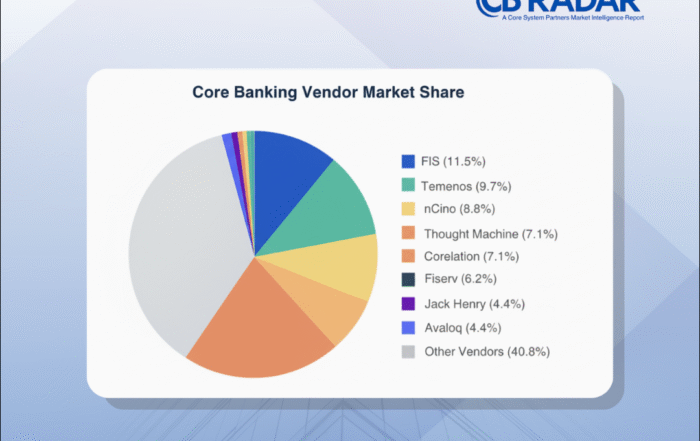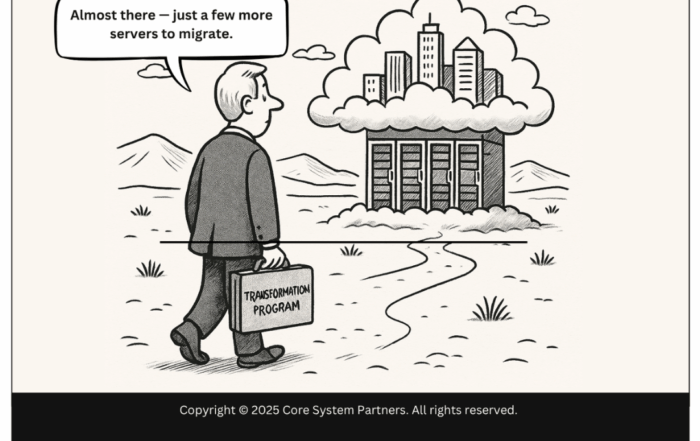
New tech won’t fix bad processes—it just makes dysfunction move faster. Fix the workflow first, then automate.
TL;DR – Why bad processes undermine even the best technology
-
Tech Alone Won’t Save You – A shiny new core system can’t fix broken workflows or outdated processes.
-
Process Inefficiencies Multiply Risk – Gaps, redundancies, and manual workarounds create bottlenecks that drag down performance.
-
Culture and Alignment Matter – If teams aren’t aligned on how processes should run, technology only amplifies the chaos.
-
Optimization First, Then Tech – Streamlining processes before implementing new systems ensures smoother adoption and better ROI.
-
Why It Matters – Successful transformation isn’t about replacing systems—it’s about fixing the way work gets done so technology can deliver real value.
Tech Won’t Fix Broken Processes—It Just Makes Bad Things Happen Faster
Let’s be honest: we’ve all seen it happen. A bank invests millions in shiny new core systems—state-of-the-art tech with all the bells and whistles—only to realize six months later that nothing’s really improved. Operations are still clunky, customers are frustrated, and employees are inventing workarounds on the fly. Why? Because underneath all that gleaming technology, the same broken processes are alive and well.
Here’s the truth: technology doesn’t fix bad processes. It just automates them. If you’re not careful, you end up moving your inefficiencies into the fast lane. So before diving headfirst into your next core banking transformation, let’s take a look at five process pitfalls that can derail even the most advanced systems—and how to steer clear of them.
1. When Tech Isn’t Aligned with Business Goals
What We See Too Often:
- IT and business teams aren’t speaking the same language.
- Banks chase features that look good in a demo but don’t solve real problems.
- Tech becomes the driver, when it should be the enabler.
The Reality:
It doesn’t matter how slick the system is—if it’s not aligned with what the business needs, it’s a waste of money. We’ve seen banks invest in systems that do a hundred things… none of which address the real bottlenecks in their processes.
How to Get It Right:
- Start by defining your business objectives, not your system requirements.
- Bring IT and business teams together early—no silos allowed.
- Evaluate potential solutions based on how they’ll move the needle on customer experience, efficiency, and compliance. If it doesn’t help you meet a clear business goal, why are you buying it?
2. No Process Documentation = Chaos Waiting to Happen
Where It Goes Off the Rails:
- Processes are in people’s heads, not in documents.
- Different branches (or even teams) are doing the same thing ten different ways.
- New systems are introduced, but nobody knows what “standard” actually means.
The Reality:
You can’t automate chaos. If you don’t have your processes mapped, documented, and standardized, the technology can’t do its job. We’ve seen transformations fail because everyone assumed “someone else” had figured out the process.
How to Get It Right:
- Map your processes—front to back, no shortcuts.
- Standardize workflows across teams and locations. Variations introduce risk.
- Make documentation accessible, clear, and part of onboarding and training. This isn’t just an IT thing—it’s an operational must-have.
3. Employee Resistance: The Silent Killer of Transformation
Common Misconceptions:
- “The system is intuitive! People will love it.”
- “Once it’s live, they’ll figure it out.”
- Ignoring the fact that change is hard, even if it’s better.
The Reality:
No matter how good your tech is, people won’t use it if they don’t trust it—or don’t understand how it helps them. We’ve seen more than one project derailed by frontline staff reverting to Excel sheets and sticky notes because nobody brought them along for the ride.
How to Get It Right:
- Involve employees early—before the system is selected, if possible.
- Show them how it helps them, not just the business. What’s in it for them?
- Invest in hands-on training and support, not just a couple of webinars and a cheat sheet. People need time and guidance to adapt.
4. Automating Bad Processes Makes Things Worse, Faster
Common Mistakes:
- Rushing to automate because “we need this live by Q3.”
- Assuming any automation is good automation.
- Thinking speed will solve problems that are actually process issues.
The Reality:
If the process is broken, automation just makes bad results happen faster. We’ve worked with banks that automated outdated approval processes—cutting staff workload but also cutting critical checks and balances. The result? Compliance issues and customer complaints skyrocketed.
How to Get It Right:
- Fix the process first, then automate.
- Use tools like process mining to identify bottlenecks and inefficiencies before you start coding.
- Remember: automation isn’t a silver bullet. It’s a tool. Use it strategically, not reactively.
5. No Plan for Continuous Improvement = Stagnation
What Banks Often Forget:
- Thinking “go-live” is the finish line.
- Ignoring user feedback because “we’re done with that project.”
- Failing to monitor KPIs to catch early warning signs.
The Reality:
Your core system isn’t set-and-forget. Business needs evolve. Regulations change. If you’re not reviewing and optimizing regularly, you’ll fall behind—and fast.
How to Get It Right:
- Establish KPIs tied to process performance, not just system uptime.
- Set up regular review cycles to assess what’s working and what’s not.
- Create a feedback loop with frontline teams. They’ll tell you where the pain points are long before it shows up in the data.
Final Thoughts: Tech + Process = Transformation Success
You can have the best system on the market, but if your processes are broken, you’re just paving cow paths. Successful core banking transformation comes from optimizing how you work first, then applying technology as an enabler—not a savior.
Ready to find out how aligned your processes and systems really are?
Take the OptimizeCore® Scorecard to assess your process efficiency, automation readiness, and technology alignment.





